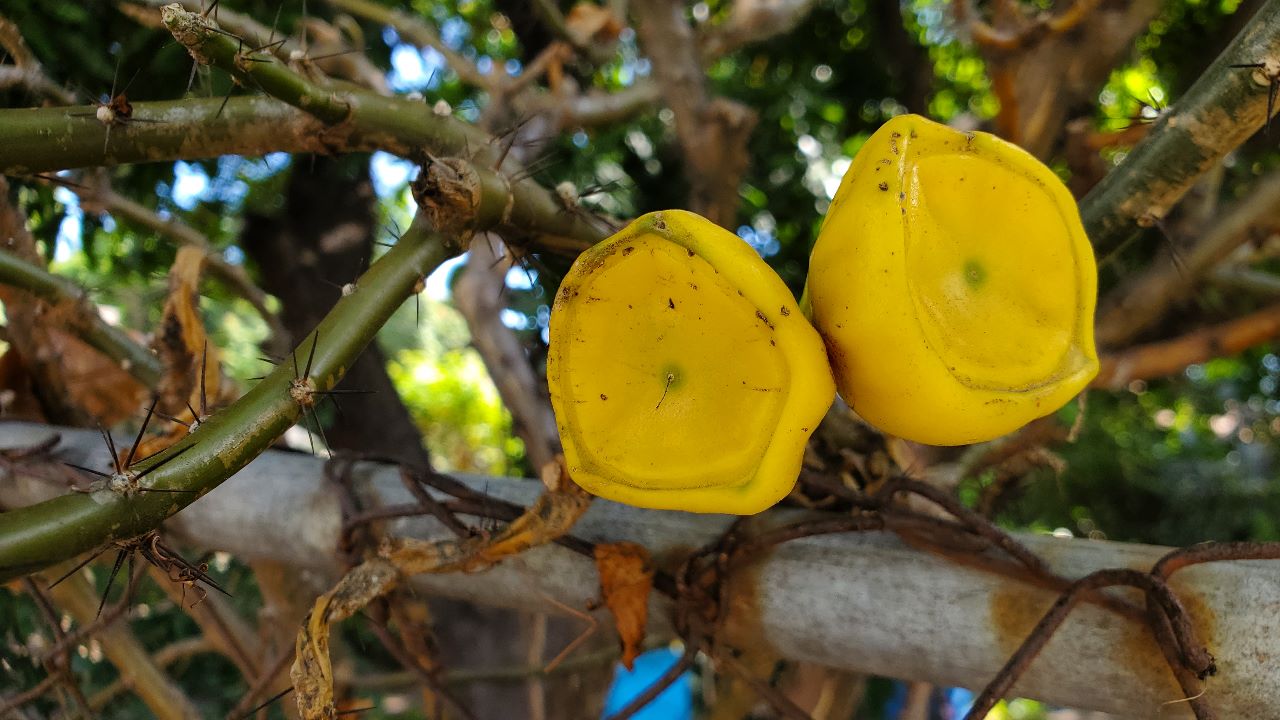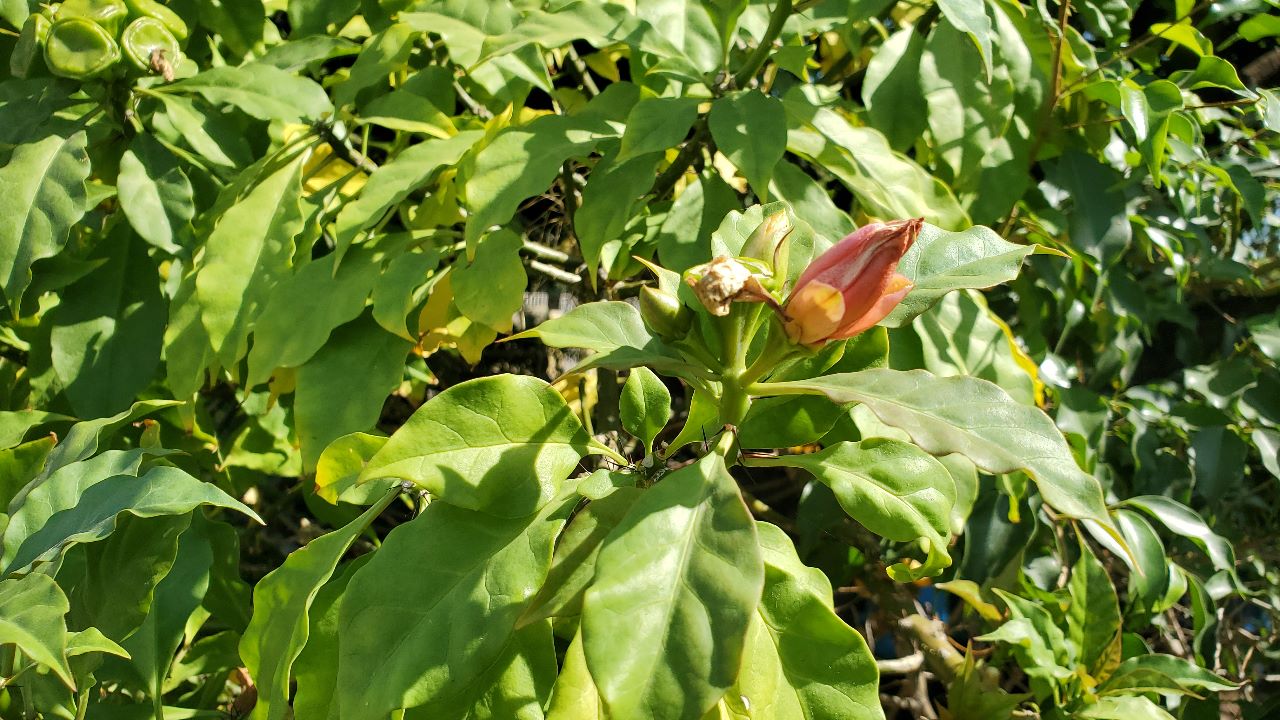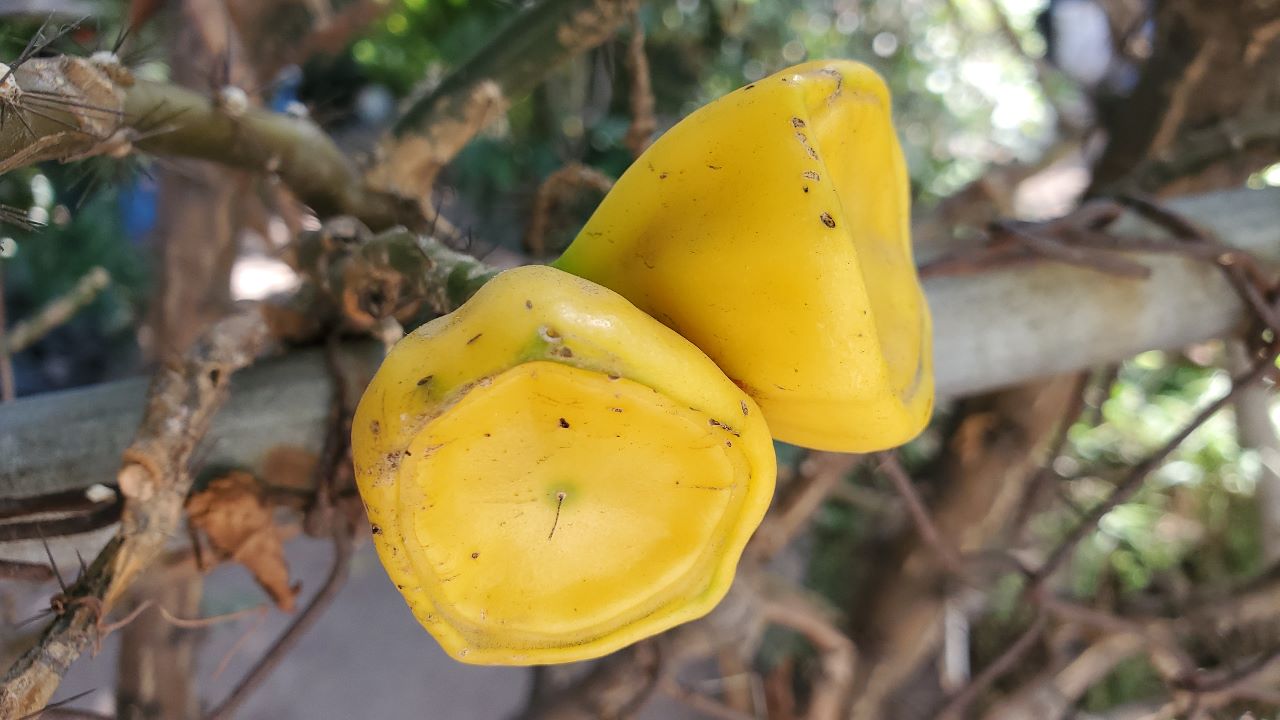Subscribe for all my updates and don't miss a thing! Sign me up!
Cactus Rose Fruit
An Unusual Cactus Plant
Sharing Is Caring! Share this awesome content with your friends now.
By Venesha Johnson | Associate Writer
Jamaica continues to surprise me. Even as a local, I am still discovering new fruits and herbs ever so often. The latest fruit we unearthed is the Cactus Rose.
New! Take a piece of Jamaica with you💃!
Savour the memories! Now you can get your authentic Jamaican souvenir items, as well as traditional Jamaican herbs, spices and housewares on our popular e-store. Click Here to learn more.
And, if you ever need a trustworthy and knowledgeable local guide, consider booking a private tour with us!
This fruit is certainly a rare find here in Jamaica, and Wellesley was able to visit Ms. Cynthia who has had one of these unique plants for over 10 years now. While she initially got the plant just to create a hedge, she later did some research and found out that it was edible. She actually blends it with other fruits to make a refreshing fruit juice.
The Cactus Rose Fruit, which scientific name is Pereskia bleo, is a member of the Pereskia genus, which sets it apart from most cacti due to its possession of leaves. Native to parts of Central and South America, this woody shrub gracefully thrives in tropical and subtropical regions, displaying its ability to adapt and prosper in diverse environments.
It is a uniquely attractive fruit that captures the imagination with its distinctive combination of green leaves and subtle yet enchanting flowers. The leaves, in various shades of green, form dense foliage, making the plant appear more like a conventional shrub than a typical cactus. The alluring flowers, which bloom in clusters, exhibit shades of pink, red, or white, adding a splash of vibrant colour to the plant's overall appearance. These captivating blossoms attract pollinators, playing a vital role in the plant's reproductive cycle.
However, beyond its visual allure, the Cactus Rose fruit holds a special place in traditional medicine practices in many places, where its leaves, stems, and fruits have been employed for their medicinal properties for centuries. Various communities across its native range have recognized the plant's potential to address a range of health issues. While scientific research on its medicinal properties is ongoing, the plant is believed to offer several potential health benefits:
1. Antioxidant-Rich
The Cactus Rose fruit, which in some places is also called the prickly pear cactus, is known to contain antioxidants, which help combat oxidative stress and reduce the damage caused by free radicals in the body. Antioxidants play a critical role in maintaining overall health and well-being, and their presence in the fruit makes it a valuable natural source of these beneficial compounds.
2. Immune Support
The plant is traditionally used to boost the immune system, thanks to its vitamin content, particularly vitamin C. By supporting the body's natural defence mechanisms, Pereskia bleo may contribute to warding off infections and enhancing overall immune function.
3. Anti-Inflammatory Properties
Certain compounds found in Cactus Rose Fruit are believed to possess anti-inflammatory properties, which may aid in alleviating inflammation-related conditions. These properties could offer relief for ailments such as arthritis and other inflammatory disorders.
4. Wound Healing and Skin Health
In traditional medicine, Pereskia bleo has been used to treat wounds and promote skin health. It is believed that the plant's extracts possess properties that aid in wound healing and soothe skin irritations.
5. Anticancer Potential
Some preliminary studies suggest it may contain bioactive compounds with potential anticancer properties. Although more research is required in this area, these early findings have piqued the scientific community's interest.
The significance of Pereskia bleo transcends its medicinal applications. In certain cultures, the plant holds symbolic value and is used in various rituals and ceremonies. Its presence in traditional practices showcases the deep connection between people and nature, where plants like it have been integral to cultural heritage for generations.
Pereskia bleo, the Leaf Cactus or Cactus Rose Fruit, stands as a living testament to nature's ingenuity and the wonders that the plant kingdom holds. Its fusion of beauty and medicinal prowess makes it a fascinating subject of study and reverence.
As scientists and traditional healers continue to unlock the secrets of this medicinal marvel, we are reminded once again of the invaluable resources provided by our natural environment. While it is definitely unique to us here in Jamaica, hopefully, it will continue to spread across our island.
Remember to check out the video below to see exactly how the fruit looks and learn Miss Cynthia's refreshing Cactus Rose Fruit concoction ingredients.

Sharing IS Caring! Please help me get the message out by sharing this article with your friends on social media (links below). Thnx ;-)
If you found this page useful, please consider subscribing to my weekly newsletter, to get even more.
It tells you each week about the new information that I have added, including new developments and great stories from lovers of Jamaica!
Return to Fruits in Jamaica from Cactus Rose Fruit
Return to My Island Jamaica Homepage from Cactus Rose Fruit
References & Sources For Cactus Rose Fruit
- Big Yellow Fruited Wax Rose Cactus (pereskia bleo) – Urban Tropicals. (n.d.). Big Yellow Fruited Wax Rose Cactus (Pereskia Bleo) – Urban Tropicals. https://urbantropicals.com/product/big-yellow-fruited-wax-rose-cactus-pereskia-bleo/
New! Get My Latest Book👇🏿
|
You asked, I've answered! You no longer need to save for months or years, to enjoy paradise! I spilled the beans! sharing my top tips on finding cozy accommodations and secret gems, only the way a native could! Click Here to pick it up on my e-store and start saving now! |
See The Best Of Jamaica - In Videos!
|
My channel reaches over 140,000 subscribers worldwide and has leveraged over 11 million views, sharing, what I call 'The Real Jamaica'. Subscribe today and join our family of viewers. |
Read More ...
New! Experience The REAL Jamaica!
Book Your Private Tour here and experience Jamaica the way we (locals) do!
P.S. Didn't find what you were looking for?
Still need help?
Click Here to try our dependable and effective Site Search tool. It works!
Or, simply click here and here, to browse my library of over 500 questions and answers! Chances are someone already asked (and got an answer to) your question.













New! Comments
Have your say about what you just read! Leave me a comment in the box below.